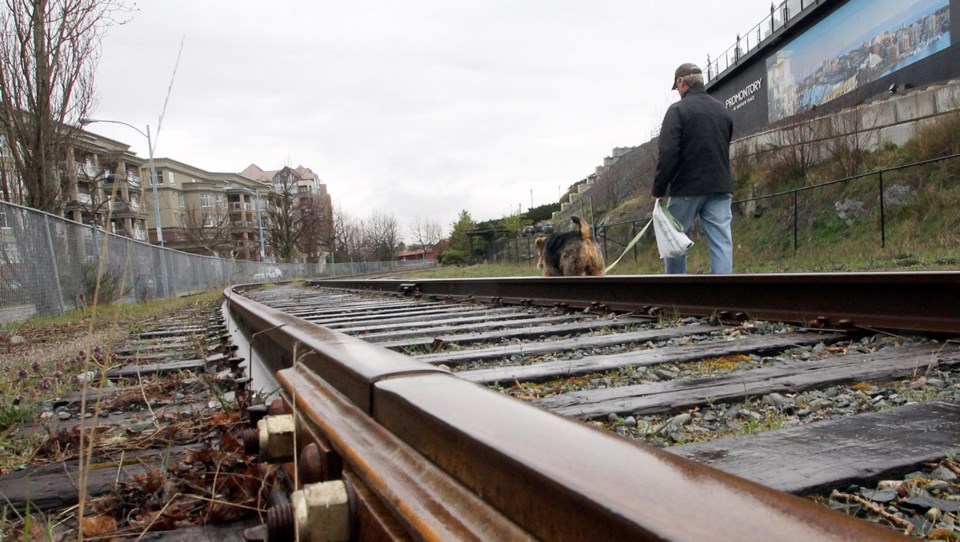Noting that the E&N Rail corridor is again drawing media attention and our current provincial poohbahs are launching yet another study of the entire rail line, I was taken with the photograph in the Nov. 26 edition of the Times Colonist, which shows a gentleman walking his dog along the rail line.
It is beyond my imagination that some people believe that this 19th-century junk pile has any future as an operating railway. The E&N was built in the 1880s as a resource railway to haul coal and timber. The former is unlikely ever to be mined on Vancouver Island in any quantity again, and the lumber industry abandoned rail transport on both the E&N and the Canadian National by the early 1970s. No railway in a lightly populated area such as Vancouver Island is ever going to thrive on passenger traffic alone.
At best, there were only a few hundred carloads of freight over the entire line, most of it between Port Alberni and Nanaimo, when the Canadian Pacific Railway surrendered ownership of the E&N. The now-departed Via Rail passenger service carried no more than 40,000 passengers in any year, was massively subsidized and then abandoned more than six years ago because of the unsafe condition of the entire railway between Victoria and Courtenay.
The costs of rehabilitating the E&N were in excess of $100 million when I was engaged as a consultant to the CPR in Calgary in the late 1990s. That figure has more than doubled today, and the deficiencies to bring the line up to current railway standards are lengthy — substrate, ballast, ties, rail, bridges, signals and the list goes on and on.
Don’t forget rolling stock — Via Rail had three Budd rail diesel cars on the Island that are long gone, not to mention that they were built between 1956 and 1958. Don’t forget the 180-plus grade crossings on the system, which are major hazards in themselves.
It was definitely to the CPR’s advantage to “give the railway back to the people” for a tax receipt rather than to attempt to rebuild it, given no meaningful freight revenue, the associated cost of upkeep and a once-a-day Via Rail passenger service that was a giveaway. Why our provincial government would spend money on yet another study raises the question “why?” but this is an NDP/Green government.
I can fully understand the merits of a high-speed commuter rail service in areas of large, dense populations. To be safe, systems need to completely separate rail from pedestrian and vehicle traffic, and the Skytrain system in Vancouver is an excellent case in point. Does anyone really want to contemplate running a commuter-rail transportation system at grade level through Admirals Way and Goldstream Avenue with the frequency necessary to maintain a viable system?
To operate safely and efficiently, a system needs to be dual track and connected to the heart of the urban centre it serves. If one really wants to consider seriously a commuter-rail system, envision an elevated line using the Galloping Goose Corridor, which would serve a population base as far west as Sooke and connecting it to the heart of downtown Victoria, noting that connection was cut at the time the Via Rail service was discontinued.
Until the day comes that economics justify a commuter-rail system that can be operated safely and efficiently, the best use of the E&N corridor is exactly what was illustrated in the photograph, a place to walk your dog or perhaps ride your bicycle.
James P. Crowley has been a consultant to Canadian National Railways, B.C. Rail and the Canadian Pacific Railway, specializing in heritage rail projects and working extensively on commuter-rail development with SNC-Lavalin and its predecessor companies, including portions of the Vancouver Skytrain system. He is the outgoing board chairman of the Victoria Airport Authority.



